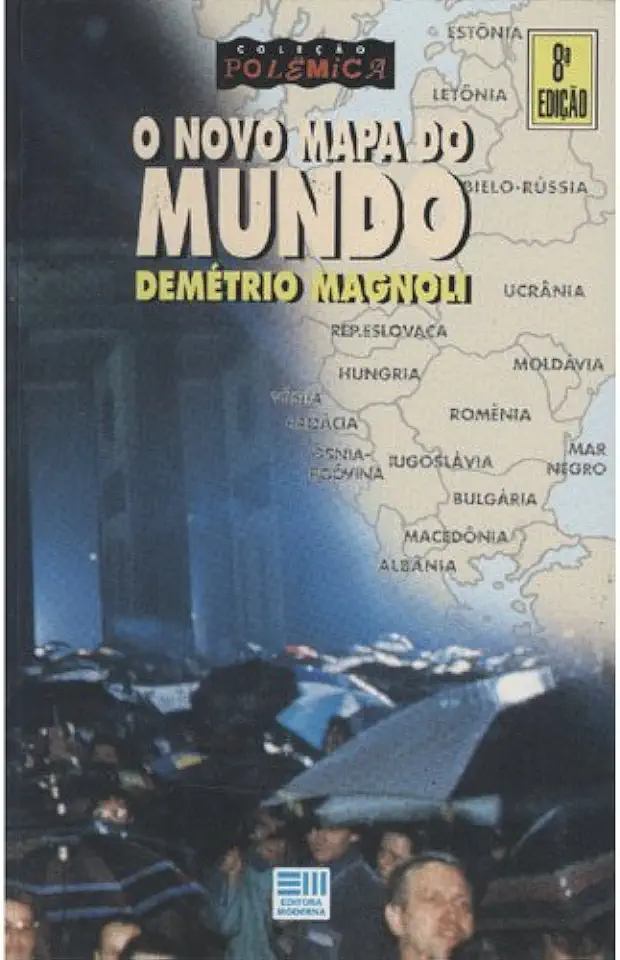
The New Map of the World - Demétrio Magnoli
The New Map of the World: The Rise of the Non-Western World and the Decline of the West
In his groundbreaking book, The New Map of the World, Demétrio Magnoli argues that the world is undergoing a profound shift in power from the West to the non-Western world. This shift is driven by a number of factors, including the rise of China, the decline of the United States, and the increasing interconnectedness of the global economy.
Magnoli's book is a must-read for anyone who wants to understand the changing global order. He provides a clear and concise analysis of the major trends shaping the world today, and he offers a provocative vision of the future.
The Rise of the Non-Western World
The non-Western world is rising. This is a fact that can no longer be ignored. China is now the world's second-largest economy, and it is on track to become the largest by 2030. India is also a rising power, and it is expected to become the world's third-largest economy by 2050.
The rise of the non-Western world is due to a number of factors, including:
- Rapid economic growth: The non-Western world has been growing at a much faster rate than the West for several decades. This growth has been driven by a number of factors, including:
- High investment rates: The non-Western world has been investing heavily in infrastructure, education, and technology.
- Low labor costs: The non-Western world has a large pool of low-cost labor, which has made it a attractive destination for foreign investment.
- Favorable demographics: The non-Western world has a younger population than the West, which gives it a demographic advantage.
- Increasing political power: The non-Western world is also gaining increasing political power. This is due in part to the rise of China, which is now a major player on the world stage. The non-Western world is also gaining power through its increasing participation in international organizations, such as the United Nations and the World Trade Organization.
- Cultural influence: The non-Western world is also having a growing cultural influence on the West. This is due in part to the increasing popularity of non-Western music, film, and literature. The non-Western world is also having an impact on Western values and beliefs.
The Decline of the West
The West is in decline. This is a fact that is difficult to accept, but it is a fact nonetheless. The West's decline is due to a number of factors, including:
- Economic stagnation: The West has been experiencing economic stagnation for several decades. This stagnation is due in part to the rise of the non-Western world, which has made it difficult for Western companies to compete.
- Political gridlock: The West is also experiencing political gridlock. This gridlock is due in part to the rise of populism, which has made it difficult for governments to pass legislation.
- Social unrest: The West is also experiencing social unrest. This unrest is due in part to the growing inequality, which has left many people feeling left behind.
The West's decline is not inevitable. However, it will require a concerted effort to reverse it. The West needs to invest in its infrastructure, education, and technology. It also needs to address its political gridlock and social unrest. If the West can do these things, it can still have a bright future.
The New Global Order
The rise of the non-Western world and the decline of the West are creating a new global order. This new order is characterized by:
- Greater interdependence: The world is becoming increasingly interconnected, and this interdependence is making it more difficult for countries to act independently.
- Greater uncertainty: The future is more uncertain than ever before, and this uncertainty is making it difficult for countries to plan for the future.
- Greater competition: The world is becoming more competitive, and this competition is making it difficult for countries to succeed.
The new global order is a challenge, but it is also an opportunity. If countries can cooperate with each other, they can create a more peaceful and prosperous world. However, if countries compete with each other, they will only create conflict and chaos.
The New Map of the World is a must-read for anyone who wants to understand the changing global order. Magnoli provides a clear and concise analysis of the major trends shaping the world today, and he offers a provocative vision of the future. This book is essential reading for anyone who wants to be prepared for the challenges and opportunities of the 21st century.